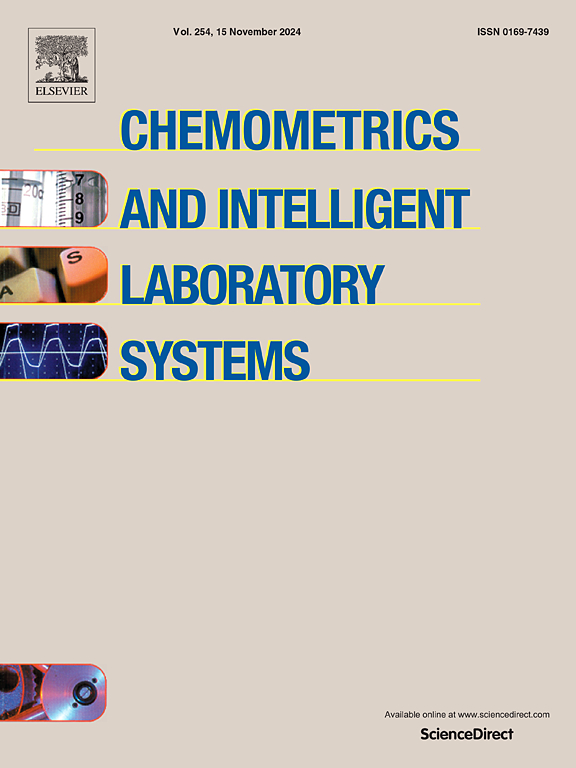基于神经网络和红外光谱的校准模型的适用范围
IF 3.7
2区 化学
Q2 AUTOMATION & CONTROL SYSTEMS
Chemometrics and Intelligent Laboratory Systems
Pub Date : 2024-10-05
DOI:10.1016/j.chemolab.2024.105242
引用次数: 0
摘要
在涉及光谱数据的常规分析测定中,人工神经网络被用作校准模型。为确保模型能对新样品生成可靠的预测,必须对适用域进行明确定义。本文介绍了当校准模型为前馈神经网络时确定适用域限制的策略。适用域由两个极限定义:1)根据训练集的网络激活计算出的马哈拉诺比距离平方的 0.99 量级;2)使用自动编码器网络或解码器网络对训练频谱重建误差的 0.99 量级。如果新样本的马哈拉诺比斯距离平方和/或频谱残差超出了这些限制,则称其超出了适用范围,预测结果值得怀疑。通过中红外光谱预测柴油样本的密度,以及通过近红外光谱预测肉类的脂肪含量,对该方法进行了说明。在使用自动编码器或解码器进行预测时,该方法都能正确检测到异常光谱。本文章由计算机程序翻译,如有差异,请以英文原文为准。
Applicability domain of a calibration model based on neural networks and infrared spectroscopy
Artificial neural networks are used as calibration models in routine analytical determinations that involve spectroscopic data. To ensure that the model will generate reliable predictions for new samples, the applicability domain must be well defined. This article describes a strategy for establishing the limits of the applicability domain when the calibration model is a feed-forward neural network. The applicability domain was defined by two limits: 1) the 0.99 quantile of the squared Mahalanobis distance calculated from the network activations of the training set and 2) the 0.99 quantile of the reconstruction error of the training spectra using either an autoencoder network or a decoder network. A new sample with a squared Mahalanobis distance and/or spectral residuals beyond these limits is said to be outside the applicability domain, and the prediction is questionable. The approach was illustrated by predicting the density of diesel fuel samples from mid-infrared spectra and the fat content in meat from near-infrared spectra. The methodology could correctly detect anomalous spectra in prediction using either the autoencoder or the decoder.
求助全文
通过发布文献求助,成功后即可免费获取论文全文。
去求助
来源期刊
CiteScore
7.50
自引率
7.70%
发文量
169
审稿时长
3.4 months
期刊介绍:
Chemometrics and Intelligent Laboratory Systems publishes original research papers, short communications, reviews, tutorials and Original Software Publications reporting on development of novel statistical, mathematical, or computer techniques in Chemistry and related disciplines.
Chemometrics is the chemical discipline that uses mathematical and statistical methods to design or select optimal procedures and experiments, and to provide maximum chemical information by analysing chemical data.
The journal deals with the following topics:
1) Development of new statistical, mathematical and chemometrical methods for Chemistry and related fields (Environmental Chemistry, Biochemistry, Toxicology, System Biology, -Omics, etc.)
2) Novel applications of chemometrics to all branches of Chemistry and related fields (typical domains of interest are: process data analysis, experimental design, data mining, signal processing, supervised modelling, decision making, robust statistics, mixture analysis, multivariate calibration etc.) Routine applications of established chemometrical techniques will not be considered.
3) Development of new software that provides novel tools or truly advances the use of chemometrical methods.
4) Well characterized data sets to test performance for the new methods and software.
The journal complies with International Committee of Medical Journal Editors'' Uniform requirements for manuscripts.

 求助内容:
求助内容: 应助结果提醒方式:
应助结果提醒方式:


